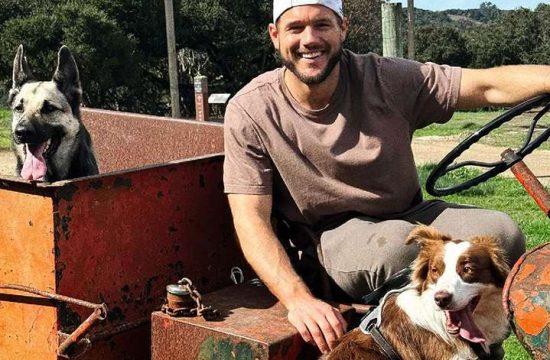Article by Dr Manasa S, B.A.M.S
Achilles tendinitis is a common condition that affects the heel. In this condition the Achilles tendon is irritated and inflamed. Achilles tendon has a greater strength to withstand big pressures. But due to overuse or during excessive exercise, the tendon can get irritated and inflamed causing pain, swelling and limited movements.
Anatomy of Achilles tendon
It is the tendon that connects calf muscles to the heel bone and is responsible for the movement of foot and ankle. It is involved in walking, running, jumping and climbing stairs and helps one to stand on the tiptoes. It is the thickest and strongest tendon in the body and has the capacity to withstand bigger forces. It is named after Greek God Achilles. It is the shared tendon between gastrocnemius and soleus muscles of the posterior leg. The plantaris tendon also fuses with the medial side of the Achilles tendon proximal to its attachment site.
Vasculature to Tendon Achilles – The anatomy of Achilles tendon is responsible for both elasticity and shock absorption in the foot. The Achilles tendon gets its blood supply from two main arteries – the Posterior tibial artery and the Peroneal artery. Achilles tendon generally has poor blood supply throughout its length as per the measurement of number of blood vessels per cross-section area. Specifically, the midsection of the tendon has less vasculature and this is the region where the injury generally occurs. The healing of the tendon takes a little longer because of its hypo vasculature throughout its length.
Injury to the Achilles tendon
The Achilles tendon is susceptible to injury because of repetitive usage or overload. These types of injuries usually occur in athletes or are related to over-exercise. 55-65% of tendon injuries because of overuse are diagnosed as Achilles tendinitis. 25-35% are due to insertional issues like retrocalcaneal bursitis and insertional tendinopathy and rest are due to complete rupture of the Achilles tendon.
Common causes of pain in the Achilles tendon
Most common causes of Achilles tendon pain are –
– Achilles tendinitis – This is an inflammation of the tendon
– Achilles tendinosis – This is an inflammatory condition which is due to degeneration caused by unresolved Achilles tendinitis.
– Achilles tendon rupture – A tear or break in the tendon because of overuse or high intensity exercise on improperly healed Achilles tendinitis.
Types of Achilles tendinitis
Achilles tendinitis is broadly divided into two types based on which part of the tendon is affected. Two types are –
Non-insertional Achilles Tendinitis – Non-insertional tendinitis is a subtype of Achilles tendinitis where the middle portion of the tendons are affected due to excessive exercise and due to this the fibres may break and tiny tears develop. This often leads to swelling and thickening of tendons. Non-insertional Achilles tendinitis most commonly affects the younger generation and active people, especially runners.
Insertional Achilles Tendinitis – The inflammation and irritation occur at the lower portion of the tendon, where it attaches to the heel bone (calcaneus). This subtype can occur at any time or activity level, although it is common in runners. This is most commonly caused by calf muscle tightness. Bone spurs often form on the heel with Achilles tendinitis.
Causes of Achilles Tendinitis
Achilles tendinitis is most commonly caused due to repetitive or severe strain on the Achilles tendon. Achilles tendon is one of the strongest tendons which can withstand high tension but the tendon weakens with age. Individuals who undertake physical activities only during weekends or who suddenly increase the intensity of the sporting activity are susceptible to Achilles tendinitis.
The causes of Achilles tendinitis can be broadly classified into two categories. They are –
Intrinsic factors – The intrinsic factors include anatomic factors, age, sex, metabolic dysfunction, foot cavity, gastrocnemius dysfunction, anatomical variation of the plantaris muscle, muscle weakness, torsion of the Achilles tendon, tendon vascularization, lateral instability of the ankle.
Extrinsic factors – These include constant effort, mechanical overload, obesity, medications such as corticosteroids, anabolic steroids, fluroquinolones, improper footwear, training on uneven and hard surfaces, and direct trauma, among others.
The common causes of Achilles tendinitis are as mentioned below –
– Straining of calf muscles during repeated movements
– Undertaking exercises without proper warmup sessions
– Playing sports like tennis which requires sudden stop and changes in the direction
– Involving in activities like running too far, too intensely or uphill too often
– Sudden increase in physical activity without giving enough rest to body to adjust to the new format of training
– Wearing ill fitted, old or high heels for longer period of time
Symptoms of Achilles Tendinitis
Common symptoms of Achilles tendinitis are as below mentioned –
– Pain along the course of tendon or back of the heel that worsens with activity
– Severe pain after exercising
– Pain and stiffness along the tendon in the morning hours after getting up from the bed
– Tendon is thickened
– Formation of bone spur on heel bone especially in insertional tendinitis
– Swelling might be present all through the day or might get worsened after activity
– Experiencing pain on the back of the heel when shoes are worn
Risk factors
Factors which might increase the risk of Achilles tendinitis include –
Age – Achilles tendinitis is more prevalent as one ages
Sex – It is most common in males
Physical problems – An individual who has a flat arch in the foot puts extra strain on the Achilles tendon. Obesity, overweight and tight calf muscles also puts extra strain on the tendon.
Individuals who suffer from tight calf muscles or weak calf muscles and bone spur – a condition where extra bone growth in the heel rubs the tendon which might lead to inflammation in Achilles tendon.
Training Choices – Individuals who use worn-out footwear while running, cold weather and running on the hilly terrain can predispose injury to Achilles tendinitis.
Health reasons – Persons who suffer from psoriasis or high blood pressure are at greater risk of experiencing Achilles tendinitis.
Medications – Few types of antibiotics like fluroquinolones are associated with higher risks of getting Achilles tendinitis.
Complications of Achilles Tendinitis
If the Achilles tendinitis is not promptly treated, the tendon becomes more vulnerable to tear or rupture which ultimately results in low quality of life because of pain and restricted movements and daily routine activities.
Prevention of Achilles Tendinitis
It might not be completely possible to prevent Achilles tendinitis, but certain measures can be taken to reduce the risk.
Gradually increasing the activity regimen from low-impact exercise slowly to activities of high intensity.
Choosing the physical activities that puts less stress on the tendon and avoiding activities such as uphill running as a suddenly planned activity. If someone wants to take up high intensity activity, it should be preceded by warm up exercises at a slower pace and then gradually moving onto high intensity workouts or sporting activities.
Shoes with adequate cushioning to the heel while exercising gives an adequate firm arch support and thus reduces the high impact on the tendon.
Stretching exercises to calf muscles and Achilles tendon in the morning before and after exercise helps to maintain flexibility
Strengthening exercises to calf muscles helps the Achilles tendon and calf muscles to endure activity and exercise
Cross training like Alternate high-impact activities like running and jumping with low-impact activities such as cycling and swimming reduces the risk of developing Achilles tendinitis.
Stop performing any activity that causes pain
Choosing flat and even surfaces for exercises
Reducing the heel size gradually from high heels to flats helps to slowly stretch and increase its range of movements.
Diagnosis
Examination by health care provider
After the detailed case history, the doctor will examine the foot and look for the following signs –
– Presence of swelling along the Achilles tendon
– Presence of bone spurs at the back of the heel
– Heel pain while stretching the calf
– Presence of pain in the middle of the tendon
– Limited range of motions in the ankle
Diagnostic tests
X-rays
X-rays help to detect the presence of bone spurs if any in case of insertional Achilles tendinitis. In case of non-insertional Achilles tendinitis, X-ray might show calcification in the middle portion of the tendon.
MRI – Magnetic resonance Imaging
Although the MRI is not needed to diagnose the case of Achilles tendinitis, it is helpful when nonsurgical treatments are not effective and surgery is the only option. MRI helps to know the extent of injury to the tendon.
Ultrasound
It is opted as it is quicker and less expensive than MRI. This offers a valuable tool to assess tendon injuries and the risk of tendinopathy and rupture. Ultrasound might provide information such as an increased thickness of the Achilles tendon, hyperaemia associated with hypo vasculature, a decrease in the gastrocnemius-soleus rotation angle.
Computed Tomography
CT – is useful to rule out trabecular structural alterations of the calcaneus in Achilles tendon.
Treatment of Achilles Tendinitis
Nonsurgical Treatment
Most cases of Achilles tendinitis respond well to nonsurgical treatment protocols. It might take three months or longer for the symptoms to completely subside. The nonsurgical treatments include –
Rest – First line of treatment in reducing the pain is to decrease the activities or completely stop the activities which might worsen the pain. Switching from high-impact exercises like running to low-impact activities will reduce stress and strain on the Achilles tendon. Opting to wear an ankle brace or boot immobilisation will definitely help in this step.
Ice – Ice is placed on the most painful area of the Achilles tendon for a maximum of 20 minutes at a time and can be carried out throughout the day. Care should be taken while keeping the ice for longer duration, it should be taken off when the area feels numb.
Compression – Compressive bandages or wraps around the painful areas help to reduce swelling and reduce movement of the tendon.
Elevation – When the inflammation is associated with swelling, elevating the foot above the level of heart helps in reducing the swelling. Elevation can be done in the night time as well.
NSAIDs – Non-steroidal Anti-inflammatory Drugs
Anti-inflammatory drugs like naproxen and ibuprofen help to reduce pain and swelling. They don’t reduce the thickening of the degenerated tendon.
Rehabilitation techniques
Physical therapy is very useful in treating Achilles tendinitis. Here are some exercises that will help in strengthening the calf muscles and help to reduce stress on Achilles tendon and thus help to reduce pain, swelling and other symptoms associated with tendinitis.
Calf stretch – An individual should lean forward against a wall with one knee straight and heel placed on the ground. The other leg should be placed in front with bent at the knee. Hip should be pushed forward to stretch the calf muscles and heel cord. People should hold themselves in this position for 10 seconds and then relax. This exercise should be done for 20 minutes for each foot.
Eccentric strengthening – These exercises are performed to tighten the muscle while it is getting longer.
A. Bilateral heel drop – It is performed by standing at the edge of a stair, or a raised platform, with just the front half of the foot on the stair. This position allows the heel to move up and down without hitting the stair. The heels are lifted off the ground and then heels are lowered slowly to the lowest point possible. This is repeated 20 times. Care should be taken while doing this exercise to make sure that the body is balanced correctly by holding onto railings of the staircase. This exercise should be performed slowly and in a controlled manner.
B. Single leg heel drop – This is done similar to bilateral heel drop, except that all the weight of the body is focused on one leg. This should be performed after mastering the bilateral heel drop technique
Injections – Cortisone is one of the preferred choices as an anti-inflammatory drug. Cortisone injections are given in other types of injuries, but it is not considered in Achilles tendinitis as injection to the inflamed part might further increase the problem by damaging the already irritated tendon.
Night splinting – Night splinting are removable braces which hold the foot in place with the toes pointing upwards while sleeping. This helps to maintain the flexibility of the calf muscles, decrease the pull of Achilles tendon and provides a substantial relief in pain while getting out of bed in the morning.
Supportive shoes and orthotics – Supportive shoes which are soft and open at the back of the heel and other orthotic devices helps to reduce irritation of the tendon. Heel lifts are another great choice to reduce the amount of strain on the tendon.
Extracorporeal Shockwave Therapy – This therapy involves either low or high-energy shockwaves to the inflamed tendon to promote healing of the damaged tendon
Biologics
Though platelet-rich plasma injections contain many growth factors but have not given substantial improvement in pain and swelling of Achilles tendinitis.
BMAC – Bone marrow aspirate concentrate helps to control inflammation, reduces fibrosis and few studies have shown that this treatment helped individuals to return to their sporting activities in about 6 months.
PBMNCs – Peripheral blood mononuclear cells which contain monocytes, macrophages, and lymphocytes are considered as new generation of regenerative autologous cell concentrate, but studies have yet to provide a solid proof for their effectiveness
Scaffolds are a combination of both natural and synthetic materials, an acellular graft comprising human graft has shown some positive outcomes.
Surgical treatment
Surgery is considered only if the pain and swelling and other related symptoms are not getting better even after 6 months.
Debridement – The word debridement means removal or cleaning up of damaged tissue. In case of insertional Achilles tendinitis, removal of bone spur from the heel in addition to damaged tissue has proven to be advantageous. After the damaged tissue is removed, the rest of the healthy tendon is attached back to the heel bone.
Gastrocnemius recession – It is a surgical procedure where the calf muscles are lengthened to increase the motion of the ankle.
Minimally invasive surgery – Here a small incision is made to remove the damaged and inflamed tendon tissue. Minimal invasive surgery is gaining importance nowadays, but there is still less information regarding its effectiveness.
Ayurveda Understanding of Achilles Tendinitis
We do not get to see any particular condition explained in Ayurveda which can be exactly correlated to Achilles Tendinitis. But we can try to understand Achilles Tendinitis through the Ayurveda lens.
Since it is a painful condition occurring around the ankle joint, certain conditions explained in the context of Vata Nanatmaja Rogas can be correlated with Achilles Tendinitis. They are – Pada Shula, Pada Bhramsha, Pada Shunyata, Gulpha Graham and Pindikodweshtana.
It can be understood as a disease caused due to predominant aggravation of vata with association of pitta. Among the dhatus (tissues), rakta dhatu is predominantly involved. This is because the kandara – tendon is a sub tissue of blood.
The etiological factors of Achilles tendinitis also are the same as the vata aggravating causative factors – including repetitive strain, overload, over usage and trauma to the tendon. Almost all symptoms of this condition also give us a picture of vata vitiation.
Treatment for Achillis Tendinitis shall be all ‘Vata and Vata-Pitta Balancing Measures’.
Related Reading – ‘Achilles Tendinitis – Ayurveda Understanding and Remedies’















